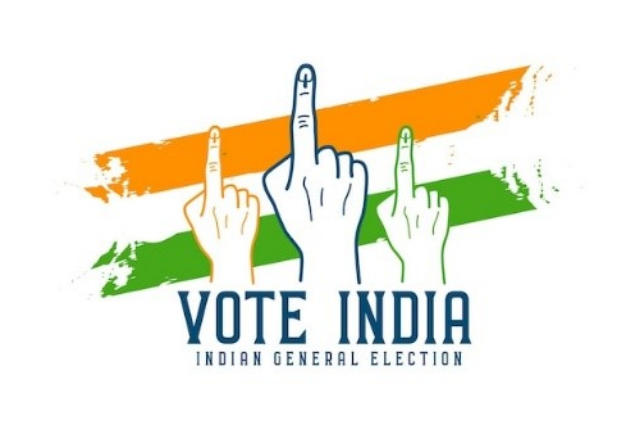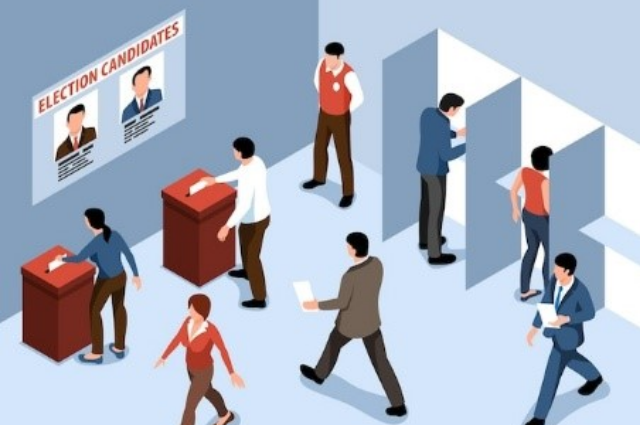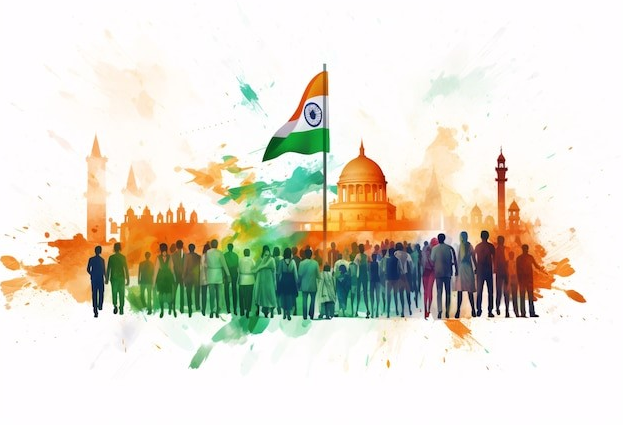
Introduction
The concept of "One Nation, One Election" revolves around the idea of conducting elections for both the Lok Sabha (the lower house of Parliament) and the state assemblies simultaneously every five years. This proposal seeks to align the election cycles of the central government and the states by creating a synchronized system for voting across the country.
Historical Context of Simultaneous Elections
The notion of holding elections simultaneously is not new to India. In fact, during the early years of the Republic, general elections for both the Parliament and state assemblies were conducted together. This practice was followed in 1951-52, 1957, 1962, and 1967. At that time, elections were orderly, streamlined, and followed a predictable cycle. However, the harmony in the election schedule was disrupted due to unforeseen political developments. For instance, mid-term elections had to be conducted in Kerala in 1960 and Odisha in 1961. These disruptions marked the beginning of a shift from coordinated elections to a staggered system.
Causes of the Shift
Several factors contributed to the breakdown of simultaneous elections in India:
- Political Instability: The lack of a decisive mandate in some elections led to unstable governments, which often collapsed before completing their full terms.
- Mid-term Dissolutions: Over the years, several state assemblies and Lok Sabhas were dissolved prematurely, further disrupting the cycle.
- Constitutional Provisions: Articles 356 and 352 of the Indian Constitution, which allow for President’s Rule and national emergency, respectively, played a role in extending or altering election timelines.
Consequences of the Shift
The result of these disruptions was a staggered election cycle, where state and central elections now take place at different times. This not only increased the frequency of elections in the country but also led to a more fragmented electoral process.
While the concept of "One Nation, One Election" promises greater efficiency and uniformity, achieving it would require significant restructuring of the current electoral system. Additionally, addressing the political and constitutional challenges that disrupted the cycle in the past would be critical to ensure its success.
Democracy and Elections: A Symbiotic Relationship

Democracy and free & fair elections are fundamentally entangled; one cannot exist meaningfully without the other. Elections form the backbone of any democratic structure, embodying the principle that power ultimately rests with the people. A democracy is unimaginable without elections, as they are the mechanism through which the will of the people is expressed and governance is legitimized. For a democracy to thrive, conducting free and fair elections is an absolute necessity by serving as the foundation for a credible and effective political system.
Elections are critical to the functioning of the political system, stemming from the core belief in the sovereignty of the people. Citizens in a democracy not only desire but also have an inherent right to replace governments according to their preferences, ensuring peaceful transitions of power. Each voter, through their ballot, performs a crucial social audit of governance and makes a conscious political choice. This act of voting underscores the representative nature of democratic institutions by granting legitimacy to the executive and legislative branches by reflecting the will of the majority.
One of democracy’s greatest strengths lies in the active participation of a large number of citizens in elections. This collective involvement reinforces the principles of equality and representation by ensuring that every individual’s voice contributes to shaping the nation’s future. The power of democracy truly shines when the highest possible number of individuals participate in this vital process by emphasizing the role of elections as a cornerstone of democratic governance.
India as a Model of Constitutional Democracy: The World’s Largest Democracy
India, as the largest democracy in the world, demonstrates the ideals of a Socialist, Secular, Democratic Republic. Since gaining independence on August 15, 1947, India has been governed by a constitutional democracy rooted in a parliamentary system. This framework ensures that democracy remains an inalienable feature of the Indian Constitution by forming a core part of its basic structure.
The Indian Constitution envisions democracy as a system where the people’s voices are represented in Parliament and state legislatures through elections. This representation is achieved by adhering to the principle of free and fair elections, which are held regularly to uphold the democratic process. Elections in India reflect the nation's commitment to ensuring that governance remains a true reflection of the people’s aspirations.
Commitment to Free and Fair Elections
At the heart of India’s democratic framework lies an unwavering commitment to conducting regular, free, and fair elections. This commitment not only strengthens the country’s democratic values but also ensures that the fundamental rights of its citizens to participate in governance are respected. By adhering to this principle, India continues to uphold the spirit of democracy, ensuring that its governance reflects the will and aspirations of its people.
Democracy and elections are inseparable pillars of governance, enabling the people to exercise their sovereign rights in a peaceful and structured manner. In India, this principle is enshrined in the Constitution and practiced through its robust electoral system. As the largest democracy in the world, India serves as a shining example of how free and fair elections can uphold democratic ideals and ensure representation for all.
The Debate on One Nation, One Election (ONOE): Examining Its Necessity and Challenges
The concept of “One Nation, One Election” (ONOE) has sparked diverse opinions in India’s federal political landscape. While some see it as a way to streamline governance, others view it as a threat to the federal structure. The proposal to amend the Constitution and facilitate simultaneous elections was introduced by the NDA government during a winter session of Parliament, which saw heated debates but little progress. In a session dominated by rhetoric and exaggerated arguments, the opportunity for constructive discourse and practical solutions was lost. Ultimately, the Bill was sent to a select committee for further scrutiny. Whether the NDA can secure the necessary two-thirds majority of attending members to pass the Bill remains uncertain.
The Challenges of Endless Elections
India’s democratic framework is often described as a festival of elections with its political calendar crowded with polls year-round. The argument for ONOE gains some ground here, as simultaneous elections could potentially reduce this constant mix.
Take the recent electoral cycle as an example. Over the last year, assembly elections were held in Rajasthan, Chhattisgarh, and Madhya Pradesh, followed by the high-stakes 2024 Lok Sabha elections. As the dust settled, assembly elections were due in Haryana and Jammu & Kashmir, the latter holding polls after a decade. Before anyone could fully assess the implications of these outcomes, elections in Maharashtra and Jharkhand were announced.
What Lies Ahead: The Never-Ending Cycle
As India enters 2025, the electoral pace might slightly slow down with Bihar being the only major state set to go to polls by the year’s end. However, this brief break will give way to a packed 2026 with states like Kerala, Tamil Nadu, West Bengal, and Assam preparing for assembly elections. In 2027, the electoral spotlight will shift to Uttar Pradesh, Uttarakhand, Punjab, Goa, and other states. The cycle continues relentlessly, concluding in the 2029 Lok Sabha elections.
A Nation Caught in a Voting Turmoil
This relentless electoral schedule demands constant attention from voters, political parties, and policymakers alike. It also raises questions about whether governance takes a backseat amid continuous campaigning. While ONOE could simplify this confused landscape, achieving consensus in a diverse federal democracy like India is an intimidating task.
The debate over ONOE is not just about elections—it reflects deeper concerns about balancing efficiency with federalism. Only through thoughtful dialogue and cooperative decision-making can the idea move beyond exaggeration to become a practical reality.
The Economic and Social Implications of Simultaneous Elections in India
In an era of complex democratic processes, the concept of simultaneous elections emerges as a transformative approach with far-reaching economic and social consequences. This article explores the complicated impact of consistent electoral cycles on India's economic landscape and societal dynamics. The potential of simultaneous elections to boost economic performance is striking. Research by the Kovind Committee reveals a remarkable correlation between coordinated elections and enhanced economic growth.
Key findings suggest:
- - A 1.5 percentage point increase in real national GDP growth during simultaneous election periods
- - Equivalent economic value of approximately INR 4.5 lakh crores in Financial Year 2024.
- - Comparative magnitude matching half of public health expenditure and one-third of educational spending
Financial Implications: The cost of conducting national and state elections ranges between INR 4-7 lakh crores, remarkably aligned with the potential growth estimates.
Inflation Dynamics: A Stabilizing Effect
Simultaneous elections demonstrate a nuanced impact on inflation rates:
- - Reduced Consumer Price Index (CPI) during synchronized electoral cycles.
- - An estimated 1.1% difference in inflation rates.
- - More pronounced inflation reduction compared to non-simultaneous election periods.
Migrant Workers: The Hidden Economic Narrative
The current electoral system poses significant challenges for India's massive migrant workforce:
Demographic Context:
- - Over 450 million migrant workers (as per 2011 census)
- - Repeated travel requirements during electoral cycles
- - Substantial financial and productivity burdens
Economic Disruptions:
- - High travel costs limiting voter participation
- - Production activities significantly impacted
- - Potential challenges in meeting domestic and international contractual obligations
Strategic Rationale for Synchronized Elections
The comprehensive analysis suggests that simultaneous elections are not merely an administrative convenience but a strategic economic intervention. By minimizing electoral disruptions, reducing economic uncertainties, and optimizing resource allocation, synchronized elections present a compelling model for India's democratic and economic evolution. The potential benefits extend beyond immediate economic metrics, promising a more efficient, inclusive, and economically robust electoral framework.
Recommendations and Background
The bills were introduced based on the recommendations of a High-Level Committee led by former President Ram Nath Kovind. This Committee submitted its report in March 2024, suggesting that aligning elections could help avoid administrative and logistical challenges, such as those posed by legal amendments and the need for political consensus.
Scope and Timeline of Simultaneous Elections
- Current Focus: The proposal currently aims to synchronize elections for the Lok Sabha (the lower house of India's Parliament) and state Assemblies. However, municipal elections are not included in this plan to avoid complications that would require approval from half of all state legislatures.
- Implementation Schedule: The earliest implementation of this proposal is targeted for the 2034 election cycle. The Constitution Amendment Bill specifies that these provisions will only take effect after the first sitting of the Lok Sabha elected in 2029, assuming that both the 18th and 19th Lok Sabha complete their full five-year terms.
Legislative and Constitutional Changes
The two Bills introduced aim to synchronize election cycles and address the practical needs of mid-term elections. They propose amendments to relevant provisions in the Constitution and Acts concerning union territories.
State-Level Implications of ONOE
- Exemptions for Municipal and Panchayat Elections: To simplify the legislative process at the initial stage, municipal and panchayat elections are excluded from this reform, avoiding the need for further approval processes.
- Adjusting Assembly Terms: Implementing simultaneous elections may require shortening the terms of some Assemblies. For instance, Assemblies with election schedules that do not align with Lok Sabha elections will have their terms adjusted accordingly.
Postponed Assembly Elections
Provision for Postponement: Article 82A(5) allows the Election Commission of India (ECI) to postpone Assembly elections in specific situations. If postponed, the Assembly's term would still align with the end of the Lok Sabha's term.
Impact of ‘One Nation, One Election’
- Cost Efficiency: Combining polling activities into a single election would reduce election-related expenses.
- Improved Governance: Fewer elections would lead to less disruption in policymaking and allow administrators to maintain focus.
- Increased Voter Turnout: Merging elections could make voting easier and increase voter participation.
- Democratic Representation: Shortening the term of an elected government may conflict with the principle of an electoral mandate.
- Challenges for States: Conducting state elections alongside national elections could undermine the autonomy of the states.
Conclusion
To implement the 'One Nation, One Election' plan, the Constitution needs to be amended. This amendment requires ratification by the state governments and the union territories across the country. Without such ratification, legal experts warn that the move could be seen as a violation of the federal structure of the country.
Several articles of the Indian Constitution need to be amended for this plan to take effect:
- Article 83: Deals with the duration of the Houses of Parliament.
- Article 85: Concerns the sessions of Parliament and prorogation and dissolution.
- Article 172: Relates to the duration of State Legislatures.
- Article 174: Pertains to the sessions of the State Legislature, propagation, and dissolution.
- Article 356: Addresses the President's rule in states.
One major challenge in implementing this plan is the lack of clarity on handling situations where Houses are dissolved or when the President's Rule is in effect. This ambiguity needs to be resolved to ensure the smooth implementation of the plan. Public opinion polls indicate strong support for the 'One Nation, One Election' plan. Over 21,000 suggestions were received, and around 81 per cent of these were in favor of the plan. This suggests that the people of India are ready to accept this significant electoral reform.

